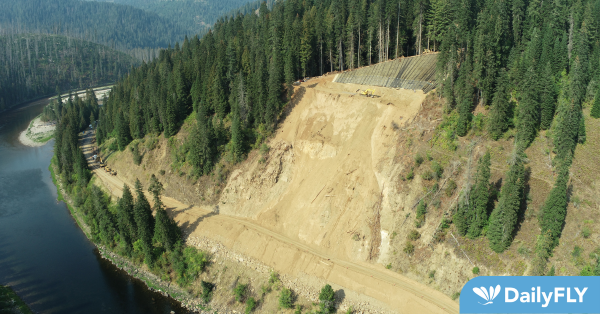| U of I-Led Project Receives $6 Million to Study Rural Perception of Climate Change
MOSCOW, Idaho — Aug. 7, 2023 — A University of Idaho-led project will receive $6 million in competitive funding to investigate how people in rural communities perceive the extent of climate change — specifically extreme heat, wildfires and drought — and how this perception affects their ability to adapt.
An understanding of how human perceptions drive decision making can guide policy making that improves the resilience of how we use resources — resources that are central to global stability. The study will focus on rural communities, which provide the majority of food, energy and water for the United States and have been effectively left out of climate adaptation dialogues.
“The reality of a changing planet is often at odds with perception and adaptation for everything from human health to national security. We know that producing endless graphs doesn’t change perception, so what does?” said Lil “Doc” Alessa, the research project principal investigator and co-director of U of I’s Center for Resilient Communities.
Over four years, the funding will provide ~$2.44 million to U of I with University of Nevada, Reno (UNR) and University of South Carolina (UofSC) each receiving ~$1.78 million. The project, titled “Where We Live (W2L) Local and Place Based Adaptation to Climate Change in Underserved Rural Communities,” will bring researchers from the three universities together to tease apart how perception drives adaptive capacity (the potential to take action to minimize the negative effects of climate change) and adaptation (actually taking action).
“Our adaptive capacity is currently quite high, but implementing those changes falls short for a variety of reasons. The good news is that successful adaptation is entirely possible. It’s the will to do so that is dependent on perception,” Alessa said.
Under the National Science Foundation (NSF) Established Program to Stimulate Competitive Research (EPSCoR) RII Track-2 program, the researchers will partner with local, state, tribal and federal organizations in rural communities. These communities constitute nearly 84% of the United States land area and are home to only 14% of the population. These areas serve as critical sources of food, freshwater, habitat and energy as well as supporting carbon sequestration, education, recreation and tourism. The RII Track-2 award process is highly competitive with only 11 awarded across the nation in 2023.
“Dialogues and policy making occurs mostly in urban areas, but rural communities are our make-or-break for adaptation to environmental change. We have almost no data on those communities to support sound policy making, which means we may not be making the best decisions when it comes to adaptive design and action,” Alessa said. “The current urban focus by policy makers, who often work and reside in cities, means that the diversity of rural communities across the United States can get lost.”
Researchers will compare the differences between individual and community-scale perceptions of their changing environments with measured records of those changes. They will model the difference between perception and measured changes, which will build highly precise futures under different scenarios of climate change. These projections also will show the outcomes of a range of community responses. The project team will also look at differences in perception and adaptation across the country, as Idaho, Nevada and South Carolina are experiencing varied types of effects from environmental change — drought, heat and wildfire.
“When such communities are challenged by climate-sensitive hazards such as heat, drought or wildfires, their recovery is limited because they lack the capacity to adequately prepare for, respond to, and adapt to these threats. Understanding the perspectives of rural areas in our three states as they confront these challenges is critical to expanding and accommodating the diversity of resilience experiences seen across the nation,” said Susan Cutter, lead of the UofSC team and co-director of the Hazards Vulnerability and Resilience Institute.
W2L is an example of how NSF’s EPSCoR programs break down the silos among academia, society and the U.S. government. As an example, one of the project’s partners is the Sustainable Economic and Education Development Solutions program, which links functions such as supply chains, logistics, food security and critical minerals to W2L. These types of partnerships accelerate transfers of knowledge by connecting and engaging the academic community with resource management and defense agencies to ensure that the needs and roles of rural citizens are incorporated into planning to ensure a more resilient America.
Advertisements “The goal is to enable better adaptation planning by showing how a variety of small changes can enhance climate resilience in rural underserved communities that are central to our nation’s sustainability and security,” said Loretta Singletary, who is UNR’s project principal investigator and a UNR professor.
|

Idaho State News
(Lewiston, ID) Lewiston Police and Fire were dispatched to the intersection of Thain Road and Preston Avenue for a report of a traffic collision...
Pullman News
Evan Ellis - Pullman Radio December 23, 2024
Local News
December 23, 2024